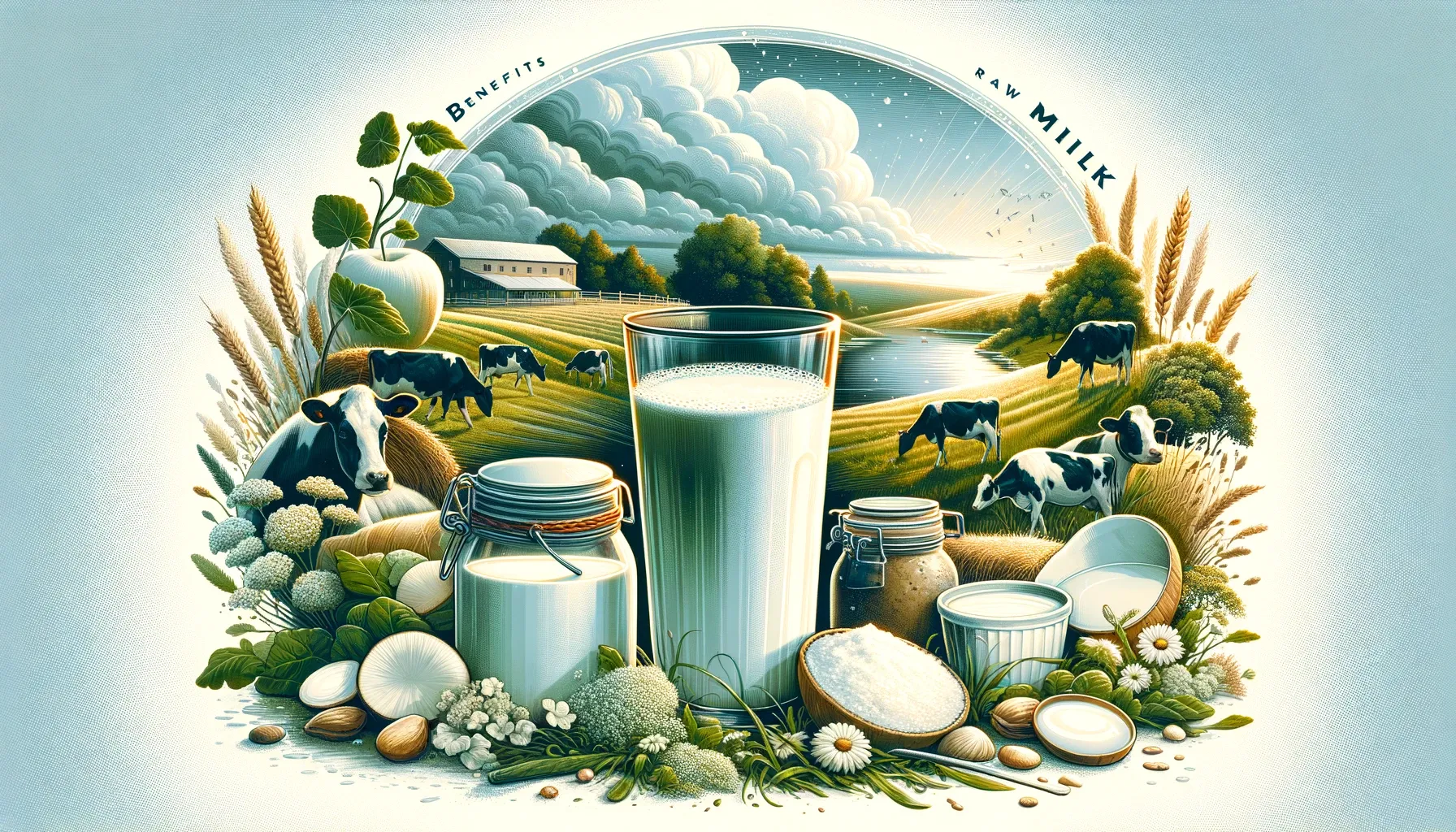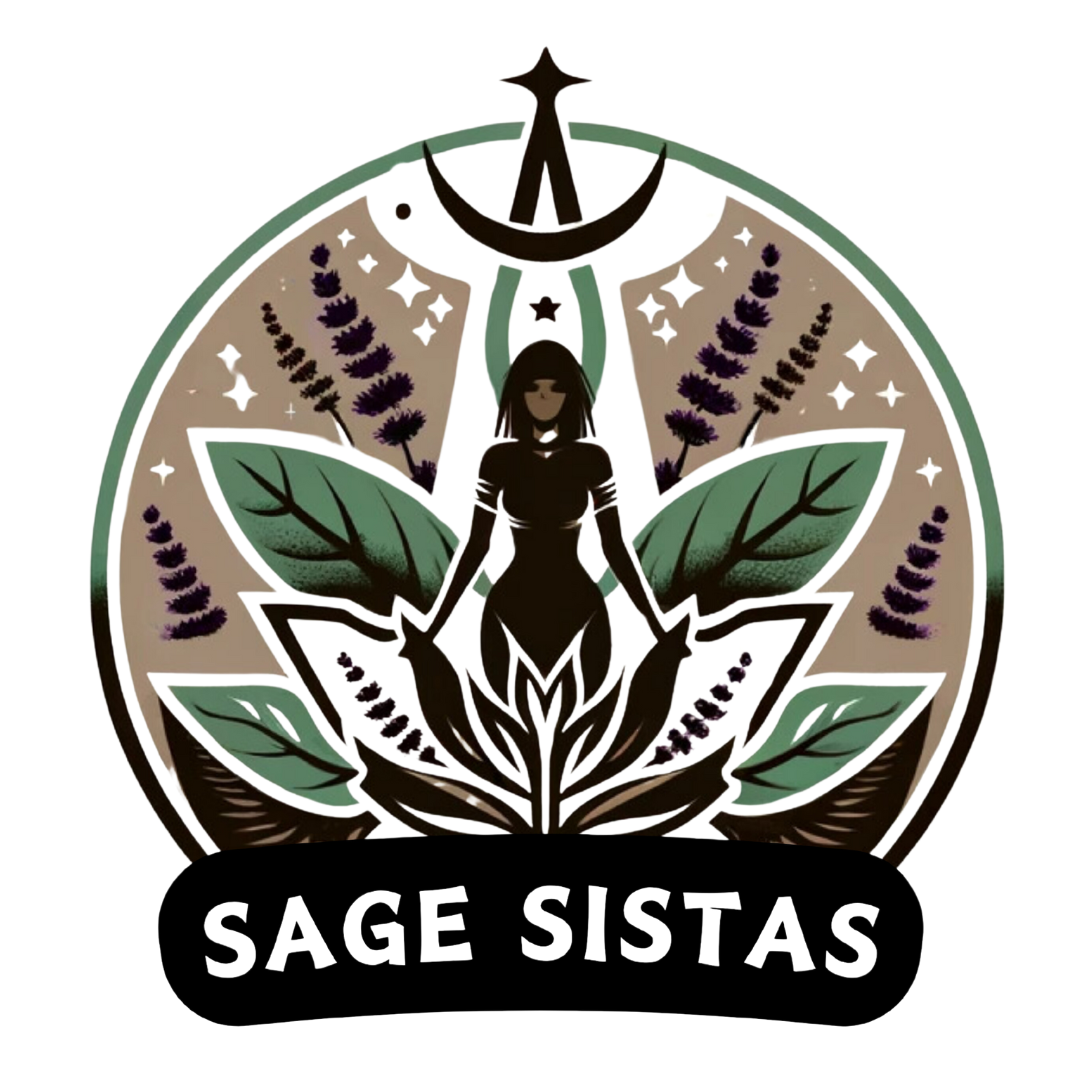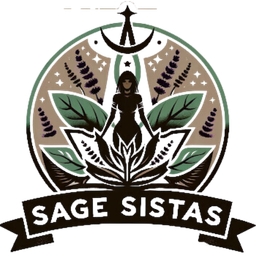Benefits of Raw Milk: A Comprehensive Guide

In the realm of nutrition and health, the debate over raw versus pasteurized milk is as old as time. Today, I'm diving deep into the world of raw milk, shedding light on its numerous benefits, addressing common concerns about pasteurization, and debunking myths surrounding its safety. As we explore the nutritional treasure trove that is raw milk, it's essential to remember the significance of sourcing from organic, local farmers to ensure quality and safety.
Introduction to Raw Milk's Nutritional Profile
Raw milk stands out as a nearly perfect food, especially when compared to the universally acknowledged breast milk for infants. Its composition is a testament to nature's wisdom, offering a balance of nutrients essential for human development. The comparison begs the question: If breast milk is the gold standard for infants, why is raw cow's or goat's milk viewed skeptically for older children and adults? The answer lies not in the milk itself but in the treatment it undergoes and where it comes from.
The Downside of Pasteurization
Pasteurization, introduced to combat milk-borne diseases, undoubtedly played a vital role in improving public health during the 19th and early 20th centuries. However, this heat treatment also has significant drawbacks. It kills beneficial enzymes and alters the milk's natural proteins. For instance, enzymes like lactoperoxidase and proteins such as lactoferrin, crucial for the immune system, are destroyed during pasteurization. This process not only diminishes the milk's nutritional value but also leaves behind dead bacteria, affecting its purity and quality.

Enzymes and Proteins: The Unsung Heroes in Raw Milk
Raw milk is a powerhouse of over 2,500 different proteins and enzymes that bolster our health in various ways. These components are essential for digestion, immune function, and metabolic processes. The presence of enzymes like lactase in raw milk also aids those with lactose intolerance, facilitating easier digestion and absorption of milk sugars.
Fatty Acids and Homogenization: The Untold Story
Beyond enzymes and proteins, raw milk is rich in approximately 400 types of fatty acids. These are compromised by homogenization, a process that breaks down fat molecules in industrial milk production, altering their natural structure and function. This not only impacts the nutritional profile of the milk but also its flavor and digestibility. The cream from raw milk, often sought after for its taste and health benefits, is particularly affected, losing its natural layering and unique properties.
The Cream of the Crop: Why Raw Milk Cream is Coveted
For many, the cream atop raw milk is not just a delicacy but a nutrient-dense component of their diet. Rich in the "waltzin factor," an anti-stiffness agent, raw milk cream offers anti-inflammatory benefits, making it particularly beneficial for individuals with conditions like rheumatoid arthritis. This highlights the broader anti-inflammatory and health-promoting properties of raw milk, often overshadowed in discussions about dairy.
Fermented Raw Milk Products: A Treasure Trove of Nutrition
Fermentation enhances the nutritional profile of raw milk, creating products like kefir and raw milk cheese. These fermented foods are not only more digestible but also richer in bioavailable nutrients, such as calcium and fat-soluble vitamins. They embody the essence of raw milk's benefits, concentrated and transformed into forms that offer unique health advantages, particularly for gut health and immune support.

Historical Uses of Raw Milk for Health Remedies
Historically, raw milk has been a remedy for a myriad of health issues, from gastrointestinal distress to allergies and asthma. Early 20th-century practices leveraged raw milk's nutritional profile to combat various ailments, a testament to its therapeutic potential. While modern medicine has advanced, the foundational benefits of raw milk, especially when sourced responsibly, remain relevant.
Delving deeper into the annals of history, raw milk's role as a panacea is both fascinating and profound. For centuries, cultures around the globe have revered raw milk not just as a staple food but as a cornerstone of natural medicine. This reverence is grounded in an intuitive understanding of its holistic benefits, long before the advent of modern nutritional science.
Ancient Wisdom and Modern Insights
In ancient times, raw milk was considered a vital life force, capable of restoring health, vitality, and balance. The Egyptians, Greeks, and Romans all documented the use of raw milk for its health-promoting properties, using it both internally and externally to treat a wide array of conditions. It was Hippocrates, the father of medicine, who prescribed raw milk for a host of diseases, recognizing its nourishing and healing capabilities.
The "Milk Cure"
Fast forward to the early 20th century, a time when raw milk experienced a resurgence as a therapeutic agent, particularly in the form of the "Milk Cure." This treatment involved consuming large quantities of raw milk to cleanse the body and heal diseases ranging from tuberculosis to malnutrition, and chronic fatigue. Renowned physicians like Dr. J.E. Crewe of the Mayo Foundation celebrated the Milk Cure for its simplicity and effectiveness, documenting remarkable recoveries that underscored raw milk's potential as a natural remedy.

Nutritional Alchemy: The Science Behind the Healing
What makes raw milk so uniquely therapeutic? The answer lies in its complex composition, teeming with life-supporting nutrients. Raw milk is a living food, containing active enzymes such as lactase, which aids in lactose digestion, and lipase, which helps in fat absorption. Its rich content of bioavailable vitamins, including A, D, and the elusive B12, alongside minerals like calcium and phosphorus, ensures comprehensive nourishment. Moreover, the presence of conjugated linoleic acid (CLA) and omega-3 fatty acids in raw milk from grass-fed animals offers anti-inflammatory and immune-boosting benefits.
Beyond Nutrition: The Probiotic Advantage
Perhaps one of the most compelling aspects of raw milk's healing prowess is its probiotic content. The beneficial bacteria found in raw milk, such as Lactobacillus and Bifidobacterium, play a crucial role in gut health, aiding digestion, and bolstering the immune system. These microorganisms contribute to a healthy microbiome, offering protection against pathogens and supporting the body's natural defense mechanisms.


Navigating the Legal Landscape of Raw Milk
The legality and perception of raw milk vary widely across the globe, influenced by cultural traditions, health policies, and consumer demand. In Europe, countries like France and Italy celebrate raw milk for its artisanal and nutritional qualities, allowing its sale under strict safety regulations. The UK permits raw milk sales directly from farms or designated outlets, balancing tradition with health concerns.
Outside Europe, the situation differs. In parts of Africa and Asia, raw milk consumption is common but less regulated, posing potential health risks. Canada maintains stringent restrictions on raw milk due to safety concerns, while New Zealand has crafted a regulatory model that permits sales with rigorous safety standards in place.
Internationally, there's a growing movement advocating for the safe consumption of raw milk, with resources like realmilk.com providing guidance on legal access and promoting awareness of its benefits. This global dialogue reflects a trend towards balancing public health with preserving traditional dietary practices, emphasizing the need for informed choices and responsible sourcing to enjoy raw milk safely.
Debunking Myths: The Safety of Raw Milk from Organic, Local Sources
The crux of the raw milk debate often centers on safety concerns. Detractors cite the risk of pathogens as a significant issue, ignoring the fact that these risks are markedly reduced when milk is sourced from healthy, organically raised animals on local farms. These farms prioritize natural feed, minimal antibiotic use, and stringent sanitation standards, all of which contribute to the safety and nutritional superiority of their milk.
It's crucial to distinguish between raw milk from industrial operations, where the risk of contamination is higher, and that from small-scale, organic farms that follow best practices in dairy farming. Education and awareness are key, as consumers should be informed about where their milk comes from, the farming practices employed, and the benefits of supporting local agriculture.
Surprising Health Benefits of Raw Goat Milk
Goat milk, often hailed as a gentler alternative to cow's milk, possesses remarkable healing capabilities that have been celebrated across cultures for centuries. Its unique composition, closely mirroring human milk, makes it not only easier to digest but also a powerhouse of essential nutrients. Rich in calcium, phosphorous, magnesium, and vitamins A and B2, among others, goat milk supports bone health, aids in the prevention of anemia, and enhances overall vitality. Its anti-inflammatory properties are particularly beneficial for those with digestive issues, offering relief to individuals suffering from conditions like eczema, asthma, and even chronic inflammation of the gut.

The presence of short and medium-chain fatty acids in goat milk, more so than in cow's milk, means it can be metabolized more quickly, providing a quick source of energy without the heaviness associated with other dairy products. Additionally, for those struggling with lactose intolerance, goat milk, while still containing lactose, often presents a more tolerable option due to its softer curd formation, making it a healing elixir for many seeking the nutritional benefits of milk without the discomfort.
Raw milk vs. plant-based milk
When comparing raw milk to plant-based milks, it's essential to understand the vast differences in nutritional content, processing, and health benefits. Raw milk, in its natural state, is a complete food, offering a rich array of enzymes, vitamins, minerals, and beneficial fats that are crucial for our health. It comes directly from the animal without the need for extensive processing or the addition of synthetic nutrients. On the other hand, many plant-based milks, while popular for their vegan-friendly profile and lower allergenic potential, often undergo significant processing. To match the nutritional value of cow's or goat's milk, manufacturers might add a variety of vitamins and minerals, along with stabilizers, emulsifiers, and preservatives to enhance shelf life and texture. This processing can lead to a final product that, while convenient, contains a cocktail of chemicals and lacks the natural, synergistic balance of nutrients found in raw milk.

Furthermore, raw milk's beneficial components, such as its unique blend of fatty acids, immune-boosting antibodies, and digestive enzymes like lactase, are inherently bioavailable, meaning they are easily absorbed and utilized by the body. Plant-based milks, despite their advantages for those with specific dietary preferences or allergies, often fall short in providing these naturally occurring, beneficial compounds. They may also contain added sugars and flavorings to improve taste, further distancing them from the natural, wholesome benefits of raw milk. If you need your milk to be vegan consider to make it yourself at home.
Rethinking Lactose Intolerance: The Role of Chemicals in Modern Milk Processing
Recent studies have highlighted that the pasteurization process may involve the use of additives and chemical treatments aimed at extending shelf life and ensuring safety against pathogens. However, these substances can alter the natural composition of milk, potentially leading to adverse health effects. For instance, the addition of synthetic vitamins to replace those lost during pasteurization could contribute to imbalances in the body's natural vitamin absorption process.
Moreover, the breakdown of lactose into simpler sugars during high-temperature processing could be a factor in the increasing prevalence of lactose intolerance. According to a review published in the "Journal of Dairy Science," the alteration of milk's natural lactose content and the denaturation of its proteins can affect digestive processes, leading to symptoms commonly attributed to lactose intolerance (Smith et al., 2019).
The conversation around raw milk is complex, woven with threads of historical practices, modern health concerns, and the evolving understanding of nutrition science. As we navigate this terrain, it becomes increasingly clear that the source of our milk, the methods used in its processing, and the presence of added chemicals play significant roles in its impact on health.
Advocates for raw milk urge a return to more natural, less processed forms of this nutrient-rich food, suggesting that many of the digestive issues attributed to milk could be mitigated by choosing raw, organically sourced milk from local farmers who prioritize animal health and milk purity.
In conclusion, the debate over raw versus pasteurized milk is not merely about preference but about understanding the deeper nutritional, health, and processing implications. As consumers, it's essential to make informed choices based on scientific evidence and personal health considerations, always bearing in mind the source and quality of the milk we consume.

FAQs about raw Milk
What is raw milk?
Raw milk is milk that comes directly from the cow, goat, sheep, or other animals without being pasteurized. Pasteurization is a process that heats milk to a specific temperature to kill harmful bacteria. Raw milk retains its natural enzymes, fats, vitamins, and minerals.
Is raw milk safe to drink?
Safety concerns about raw milk relate primarily to the risk of consuming harmful bacteria that pasteurization would otherwise eliminate. However, when sourced from clean, well-managed farms where animals are healthy and sanitation practices are rigorously followed, the risk can be significantly minimized. Consumers are advised to buy raw milk from reputable sources and handle it with care.
What are the benefits of raw milk?
Nutritional benefits of raw milk include a richer content of certain enzymes, vitamins, and fatty acids that may be reduced or destroyed during pasteurization. Proponents of raw milk argue that it can support a healthier immune system, improve skin health, aid in digestion, and contribute to stronger bones, among other benefits.
Can raw milk cause lactose intolerance?
Lactose intolerance is often attributed to an inability to digest lactose, the sugar found in milk. Some people find that raw milk, which contains the enzyme lactase, is easier to digest compared to pasteurized milk, where this enzyme is no longer active. However, individual responses can vary, and some may still experience intolerance symptoms with raw milk.
How should raw milk be stored?
Storing raw milk requires careful attention to temperature to minimize the risk of bacterial growth. It should be refrigerated at or below 40°F (4°C) and consumed within a week of purchase. Always keep the milk in a clean, sealed container and avoid cross-contamination with other foods.
Can children drink raw milk?
Children and raw milk: This is a contentious topic. Some health organizations advise against giving raw milk to children due to their developing immune systems and higher vulnerability to foodborne illnesses. If considering raw milk for children, consult with a healthcare provider and ensure the milk is from a trustworthy source.
How can I find a reputable raw milk source?
Finding raw milk can be done through local farms, farmers' markets, and co-ops that offer raw milk products. Websites like realmilk.com provide resources for locating raw milk in your area. It's important to research and visit the farm if possible, to inquire about their farming and handling practices.
Is raw milk legal?
Legality of raw milk varies by country and within countries, such as the United States, where it's regulated on a state-by-state basis. Some states allow sales in stores, others only permit farm sales or shares, and a few have strict prohibitions. Check local laws to understand the regulations in your area.


